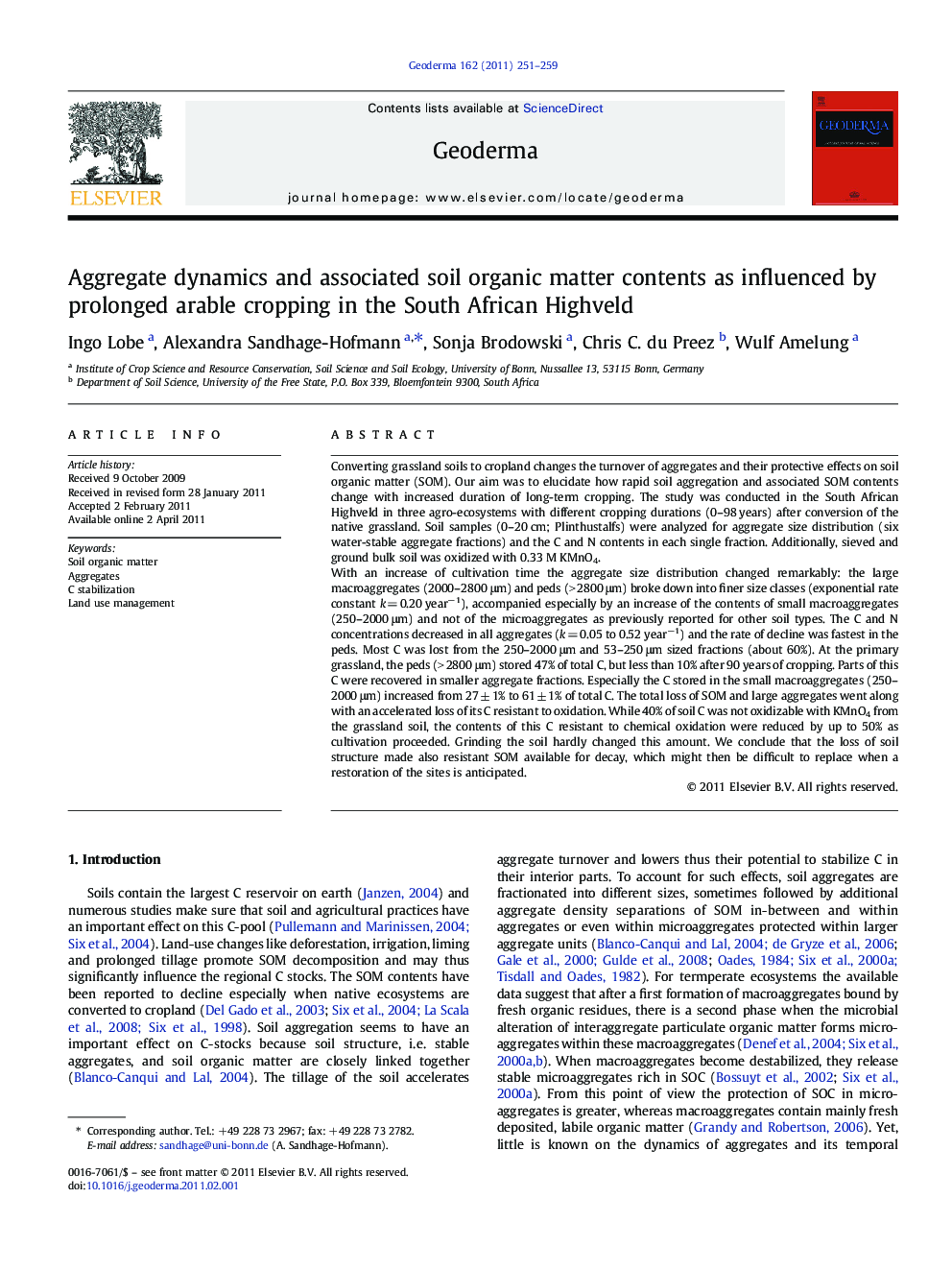| کد مقاله | کد نشریه | سال انتشار | مقاله انگلیسی | نسخه تمام متن |
|---|---|---|---|---|
| 4574211 | 1629510 | 2011 | 9 صفحه PDF | دانلود رایگان |

Converting grassland soils to cropland changes the turnover of aggregates and their protective effects on soil organic matter (SOM). Our aim was to elucidate how rapid soil aggregation and associated SOM contents change with increased duration of long-term cropping. The study was conducted in the South African Highveld in three agro-ecosystems with different cropping durations (0–98 years) after conversion of the native grassland. Soil samples (0–20 cm; Plinthustalfs) were analyzed for aggregate size distribution (six water-stable aggregate fractions) and the C and N contents in each single fraction. Additionally, sieved and ground bulk soil was oxidized with 0.33 M KMnO4.With an increase of cultivation time the aggregate size distribution changed remarkably: the large macroaggregates (2000–2800 μm) and peds (> 2800 μm) broke down into finer size classes (exponential rate constant k = 0.20 year−1), accompanied especially by an increase of the contents of small macroaggregates (250–2000 μm) and not of the microaggregates as previously reported for other soil types. The C and N concentrations decreased in all aggregates (k = 0.05 to 0.52 year−1) and the rate of decline was fastest in the peds. Most C was lost from the 250–2000 μm and 53–250 μm sized fractions (about 60%). At the primary grassland, the peds (> 2800 μm) stored 47% of total C, but less than 10% after 90 years of cropping. Parts of this C were recovered in smaller aggregate fractions. Especially the C stored in the small macroaggregates (250–2000 μm) increased from 27 ± 1% to 61 ± 1% of total C. The total loss of SOM and large aggregates went along with an accelerated loss of its C resistant to oxidation. While 40% of soil C was not oxidizable with KMnO4 from the grassland soil, the contents of this C resistant to chemical oxidation were reduced by up to 50% as cultivation proceeded. Grinding the soil hardly changed this amount. We conclude that the loss of soil structure made also resistant SOM available for decay, which might then be difficult to replace when a restoration of the sites is anticipated.
Research highlights
► Long-term cropping
Journal: Geoderma - Volume 162, Issues 3–4, 15 May 2011, Pages 251–259